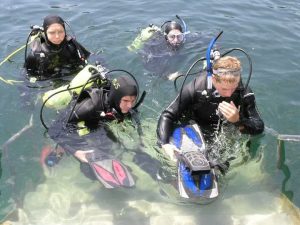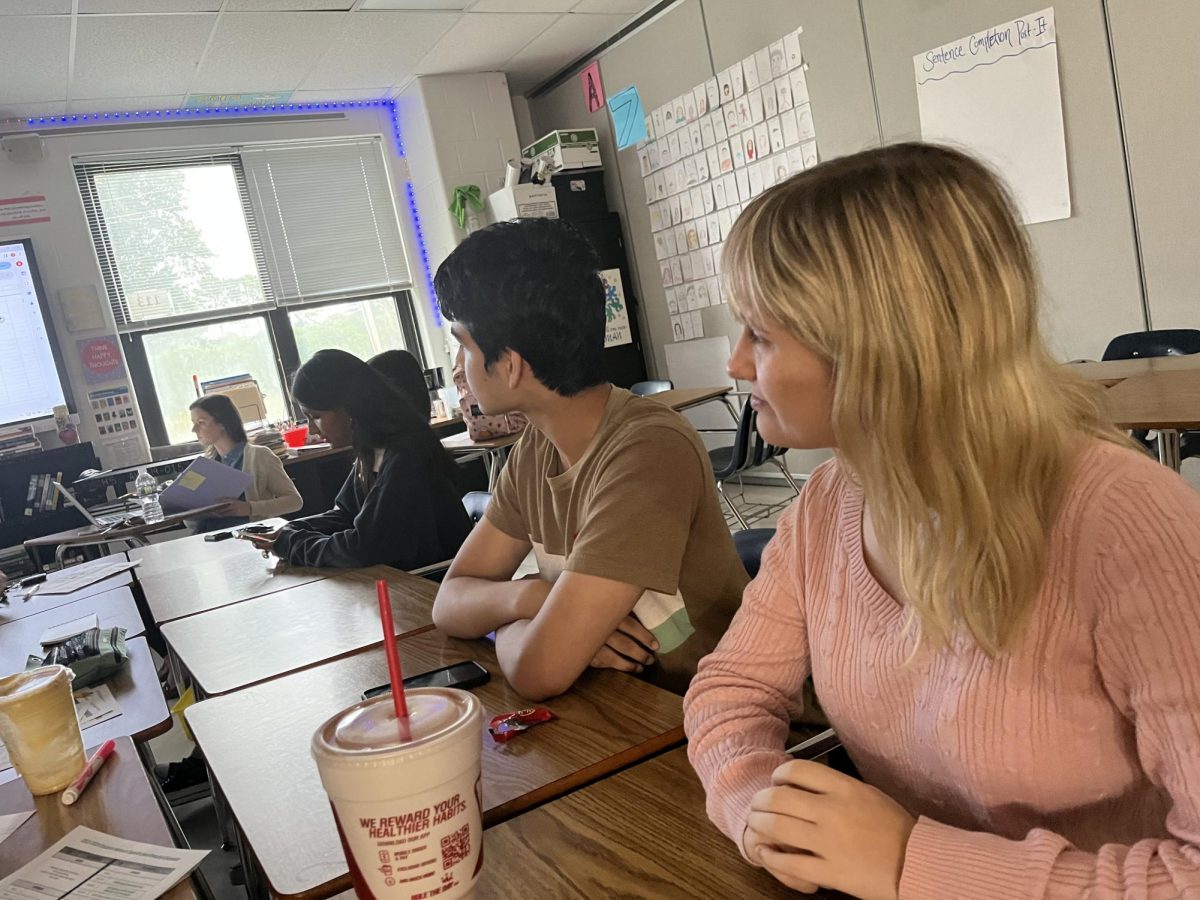Dark.
The blackness is everywhere.
Cold.
The rare wave of heat ripples visibly through its frigid surroundings.
Deep.
The rules governing the human body become practically meaningless.
Extreme.
One false move could result in death. These are the realities every scuba diver must face.
Zak Davlin and Matt Richart understand, but they aren’t phased by the darkness, coldness, depth, or extremity.
Friends since first grade, the pair of juniors started scuba diving nearly four years ago. Richart had dived in the Bahamas with his father when

he was younger and, years later, wanted to give scuba diving another try. Davlin noticed scuba gear in the trunk of Richart’s family’s car, asked him about it, and soon both enrolled in an entry-level scuba certification course.
Scuba certification may sound daunting to some, but prospective divers can attain basic certification in only a few weeks. Davlin and Richart have earned the bulk of their certificationswhich include advanced open water, rescue, night diving, and underwater pumpkin carvingthrough Midwest Scuba, a scuba equipment store and training center located in St. Charles.
“Matt and Zak were both phenomenal,” Marty Knight, the veteran instructor at Midwest Scuba who has taught most of Davlin and Richart’s certification classes, said. “They were very quick learners.”
Most scuba courses include three parts: classroom, confined water, and open water. Around half of the preparation happens above water in the classroom, reviewing necessary skills to ensure the diver has the knowledge to handle any unforeseen situation. Then, time spent first in a confined pool and finally in nature allows the diver to become more comfortable with the scuba process. Usually very safe, scuba diving can, on extremely rare occasions, result in popped lungs and even death without proper care, technique and training. Due to the low risk, neither Richart nor Davlin fear death, but they are both aware of the dangers.
In order to avoid these very real dangers, diving is a buddy sporteveryone must dive with another person. Richart and Davlin came in with a “built-in buddy”, according to their instructor Knight. While each has dived many times with other people, they prefer to dive with one another.
“It is a lot better to dive with someone you know,” Davlin said. “You can’t talk underwater with a [pressure] regulator in your mouth, so you can only communicate with signs. [Diving with Richart] makes it easier because we know each other’s signs.”
The friends dive most frequently at Quail Run Quarry in Rolla, Mo. and Mermet Springs in southern Illinois, destinations featuring local wildlife and special underwater attractions. Mermet Springs even includes a sunken Boeing 747, which divers can explore at will. Additionally, Richart has dived under the crystal blue waters of the Caribbean, and Davlin has explored the coral reefs off the coast of the Philippines.
“The planet is two-thirds covered with water,” Knight said. “Scuba divers can see more than just the one-third of land, they can see the whole rest of the world.”
Richart agreed, “It’s cool to be able to go places not many people can go and get a new perspective.”








![Ninja Christmas [Comic]](https://FHNtoday.com/wp-content/uploads/2024/12/Ninga-Christmas-Comic-1200x898.jpeg)







